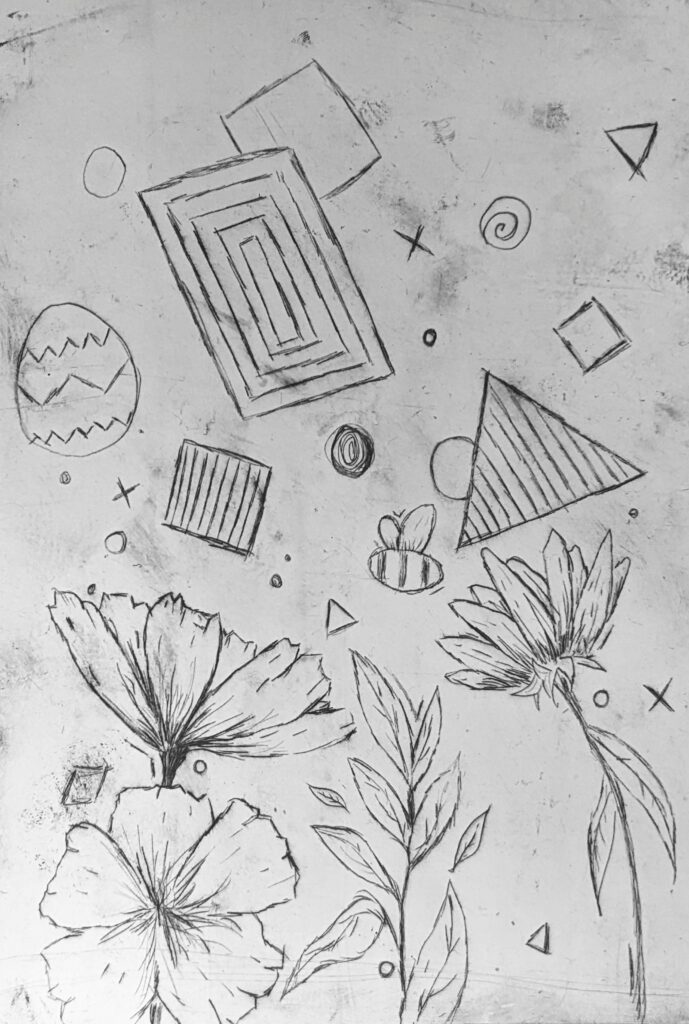In this workshop, we created art using a technique called etching. Etchings were first made in 1500 in Germany. The technique was used on iron plates since they were stronger than copper. However, iron is more susceptible to rust which made it harder to work with. During this time frame, a piece that is known for being one of the first etching art to be well known was Albrecht Altdorfes’ Landscape with a Double Spruce.
To create our own pieces with this technique, we first sketched out our designs onto paper and taped a piece of acetate over the top of it. Then, with an etching needle, I scratched the design from the paper on top of it. Once I got the main outlines done with it, I got rid of the tape on it so I could hold it to the lights above us to see what sections needed more lines on them. Once the design was scratched into the acetate, we dabbed an oil based ink over the surface and used a spare cloth to remove the ink from the surface that wasn’t scratched. The ink stayed in the marks when we cleaned the surface, which is good.
After damping the paper I was printing this onto, I moved everything over to the etching press. This adds pressure onto the paper and acetate, transferring the ink from the grooves over to the paper. While this technique didn’t relate to my specialist practice much, I included flowers and shapes from my research into the design.
This was the piece I created for this:

Overall, I liked doing this workshop. It was fun and the technique was interesting. It was difficult at first since I struggled with seeing where I had placed my marks in the acetate. However, I found ways to work around that.
I think you could create some detailed pieces with this method, and add shadows to your drawings if you practiced enough since if you leave a small bit of ink on the screen it shows up grey as you can see in my picture above. You could even experiment with the colour of the inks you put on it or print it onto different types of paper. I think if I had more time on this project, I would love to experiment more with this.